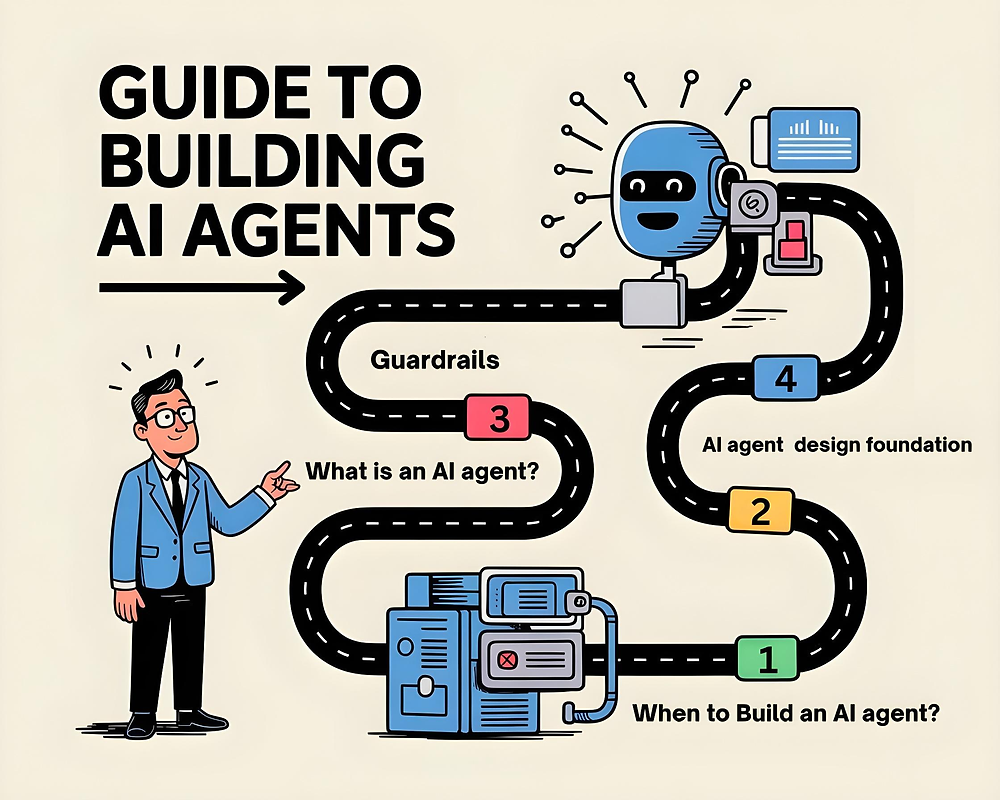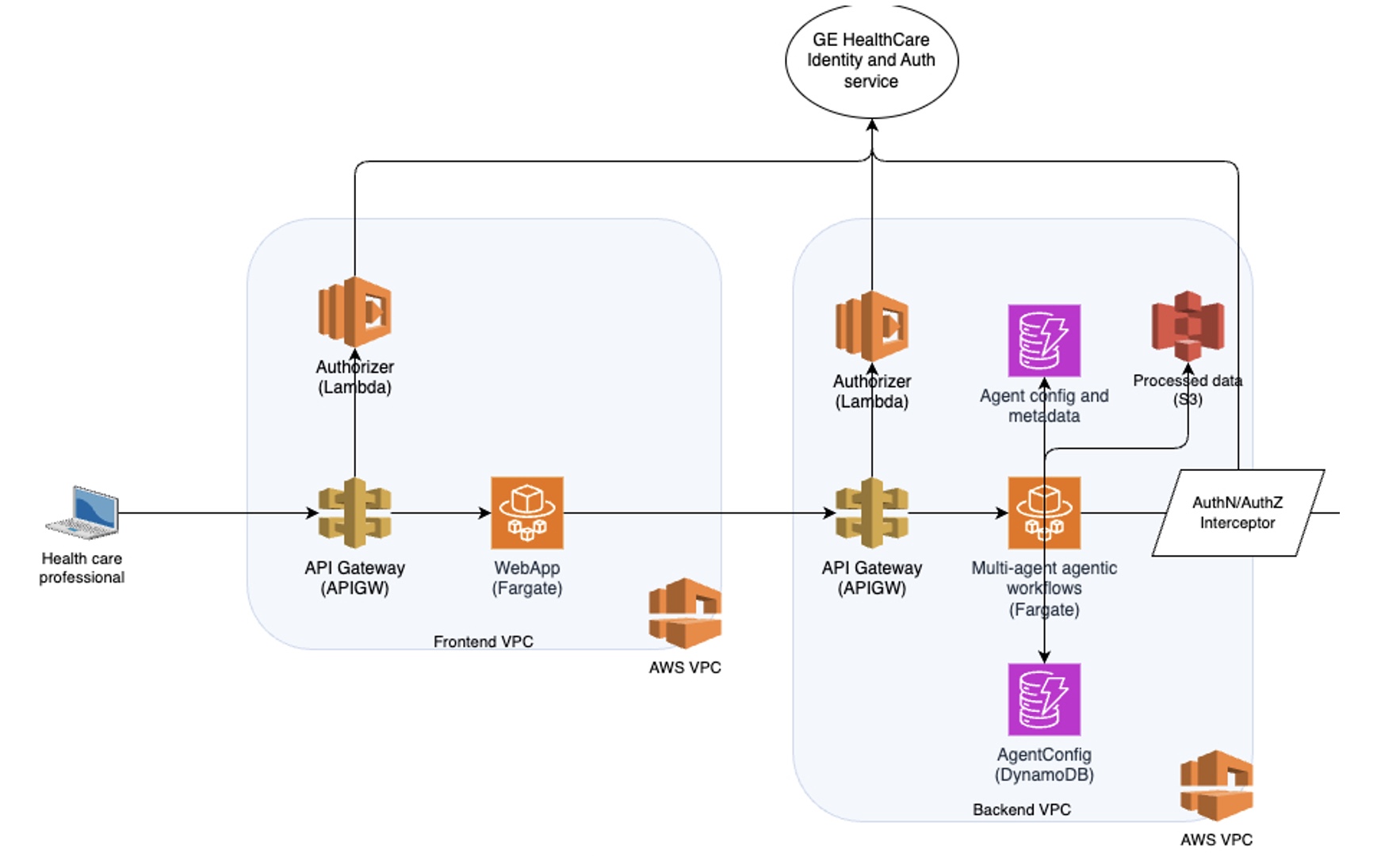OpenAI A Practical Guide to Building Agents: Key Frameworks and Strategies for Developers


OpenAI's Practical Guide to Building Agents: A Complete Breakdown for Developers
Estimated reading time: 8 minutes
Key Takeaways
- OpenAI has released 'A Practical Guide to Building Agents,' a comprehensive resource for AI development.
- The guide focuses on three pillars of agent development: the model layer, tools integration, and the instruction framework.
- OpenAI introduces three orchestration patterns to manage complex workflows.
- Emphasis on safety measures and human oversight in deploying AI agents.
- Recommendations for a practical development strategy: start small, monitor and iterate, and build incrementally.
Table of contents
- Understanding AI Agents: The Foundation
- The Three Pillars of Agent Development
- Orchestration Patterns: Managing Complex Workflows
- When to Deploy AI Agents
- Safety First: Implementing Guardrails
In a groundbreaking move that's set to reshape how we approach AI development, OpenAI has released 'A Practical Guide to Building Agents.' This comprehensive resource arrives at a crucial time when businesses are increasingly looking to harness the power of autonomous AI systems. Let's dive deep into this game-changing guide and explore the essential elements of building effective AI agents.
Understanding AI Agents: The Foundation
Before we delve into the practical aspects, it's crucial to understand what AI agents actually are. These sophisticated systems, powered by large language models (LLMs), are designed to operate autonomously with minimal human oversight. Unlike traditional automation tools, AI agents can interpret complex instructions, interact with various external tools, and adapt to dynamic workflows, representing a significant evolution in artificial intelligence technology.
The Three Pillars of Agent Development
1. The Model Layer
The foundation of any AI agent begins with selecting the right language model. OpenAI emphasizes starting with robust, high-performing models to establish a solid baseline. As your system matures, you can optimize for cost and latency by experimenting with smaller models where appropriate. This approach ensures both reliability and efficiency in your agent's operations. For beginners looking to understand more about building AI agents, refer to Microsoft AI Agents for Beginners.
2. The Tools Integration
The true power of AI agents lies in their ability to interact with external tools. These can include:
- Database systems
- API integrations
- Action triggers
- CRM platforms
- Email systems
- Workflow management tools
The integration of these tools extends the agent's capabilities far beyond simple text processing, enabling real-world actions and complex task completion. Tools like Langflow: Revolutionizing AI Workflow Development with a Visual, Low-Code Platform can greatly simplify this integration process.
3. The Instruction Framework
Clear, structured instructions are vital for successful agent deployment. These instructions should:
- Define clear objectives
- Set operational boundaries
- Provide guidance for edge cases
- Ensure alignment with intended outcomes
Orchestration Patterns: Managing Complex Workflows
OpenAI's guide introduces three primary patterns for orchestrating agent behavior:
1. Single-Agent Loop
This is the simplest implementation, where one agent handles all aspects of a workflow. It's ideal for straightforward tasks and serves as a good starting point for many applications.
2. Manager Pattern
As workflows become more complex, the manager pattern introduces a central 'manager' agent that coordinates multiple specialist sub-agents. This hierarchy enables more sophisticated task handling and better resource allocation.
3. Decentralized Pattern
In this advanced configuration, multiple peer agents collaborate, passing tasks between themselves based on their specialized capabilities or the current stage in the process.
When to Deploy AI Agents
The guide offers clear criteria for determining when AI agents are most beneficial:
- When traditional automation falls short due to complex decision-making requirements
- In scenarios where rule-based systems become too cumbersome
- For processing unstructured data, such as in claims processing or customer service interactions. For instance, AI voice bots can enhance customer service interactions by providing 24/7 support, as discussed in What is an AI Voice Bot? A Comprehensive Guide for Small Businesses.
- When flexibility and adaptability are crucial to the workflow. Additionally, AI voice receptionists can provide 24/7 call handling, detailed in The Ultimate Guide to AI Voice Receptionists: Benefits, Features, and Implementation for Businesses.
Safety First: Implementing Guardrails
OpenAI strongly emphasizes the importance of safety measures and human oversight:
- Multiple layers of safeguards should be implemented to ensure reliable operation
- Human-in-the-loop systems are crucial for high-stakes decisions
- Clear operational boundaries must be defined
- Fallback procedures should be established for low-confidence situations
Practical Development Strategy
For teams looking to implement AI agents, OpenAI recommends:
1. Start Small
- Choose workflows with clear automation benefits
- Validate your approach with limited deployments
- Scale gradually based on success metrics
2. Monitor and Iterate
- Track performance metrics closely
- Refine instructions based on real-world feedback
- Optimize tool integrations continuously
- Adjust fallback procedures as needed
3. Build Incrementally
- Begin with single-agent implementations
- Add complexity gradually
- Validate each stage before moving to the next
Additional Resources and Support
To support developers and organizations in their agent-building journey, OpenAI has made available:
- A detailed PDF guide with comprehensive instructions
- Business resources for strategic planning
- Video tutorials for practical implementation
- Documentation for technical integration
Additionally, for insights into future business automation trends, refer to Business Automation 2025: Key Trends, AI-Powered Workflows, and Tools for Future Success.
The Path Forward
OpenAI's practical guide represents a significant milestone in the democratization of AI agent development. By providing clear frameworks, practical advice, and real-world examples, it enables organizations of all sizes to begin implementing autonomous AI systems effectively.
The future of AI agents looks promising, with potential applications across numerous industries. As more organizations adopt these technologies, we can expect to see increasingly sophisticated implementations and new patterns of use emerging.
Remember, successful agent deployment isn't about replacing human workers but augmenting their capabilities. By following OpenAI's guidelines and taking a measured, systematic approach to implementation, organizations can harness the power of AI agents while maintaining necessary control and oversight.
The release of this practical guide marks an important step forward in making advanced AI capabilities more accessible and implementable for development teams worldwide. As we continue to explore and expand the possibilities of AI agents, this resource will undoubtedly serve as a crucial reference point for developers and organizations alike.



